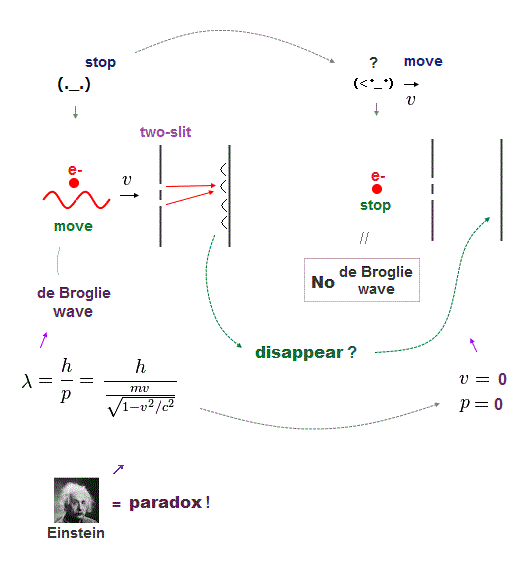
Home page
Einstein relativity is wrong
(Fig.1) Electron's de Broglie wavelength and interference changed by observers' motion, which is paradox showing Einstein relativity is wrong.

In the upper Fig.1, a stationary observer K sees an electron moving at a velocity v causing the interference of the electron's de Broglie wave on the screen in the two-slit or diffraction experiment.
The electron's de Broglie wavelength is experimentally known to be λ = h/mv where h is Planck constant, m is the electron's mass, v is the electron's velocity.
But seen by a different observer K' moving at the same velocity v as the electron, the electron appears to stop and cause No interference fringe due to the stationary electron's de Broglie wavelength being infinity (= electron's wavelength λ = h/mv → ∞ in the electron's velocity v → 0 ).
This is clearly paradox showing Einstein relativity is false.
Because differently-moving observers see the different interference patterns on the screen due to the electron's de Broglie wavelength or velocity changed by the observers' motion ( this 2nd-last-paragraph ).
Solving this de Broglie wave paradox of relativity needs the real medium (= unreasonably rejected by Einstein ) where the electron moving with respect to the medium has kinetic energy and generates de Broglie wave, irrelevant to observers' motion (= No paradox ).
↑ As a result, to solve this relativistic paradox, the electron's de Broglie wave must be treated as real wave generated in the medium, and the unrealistic quantum mechanical wavefunction (= wave-particle duality ) with superposition or parallel worlds must be replaced by the realistic atomic model.

Feel free to link to this site.